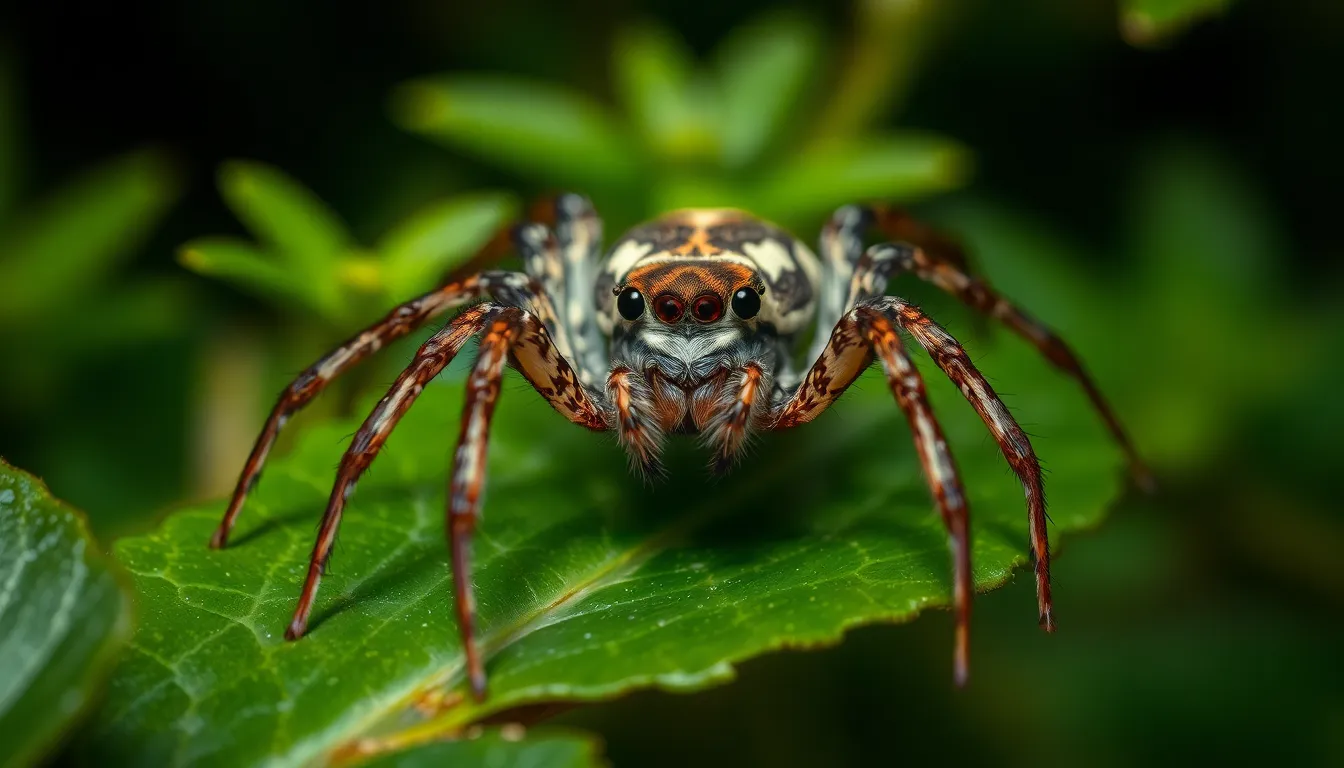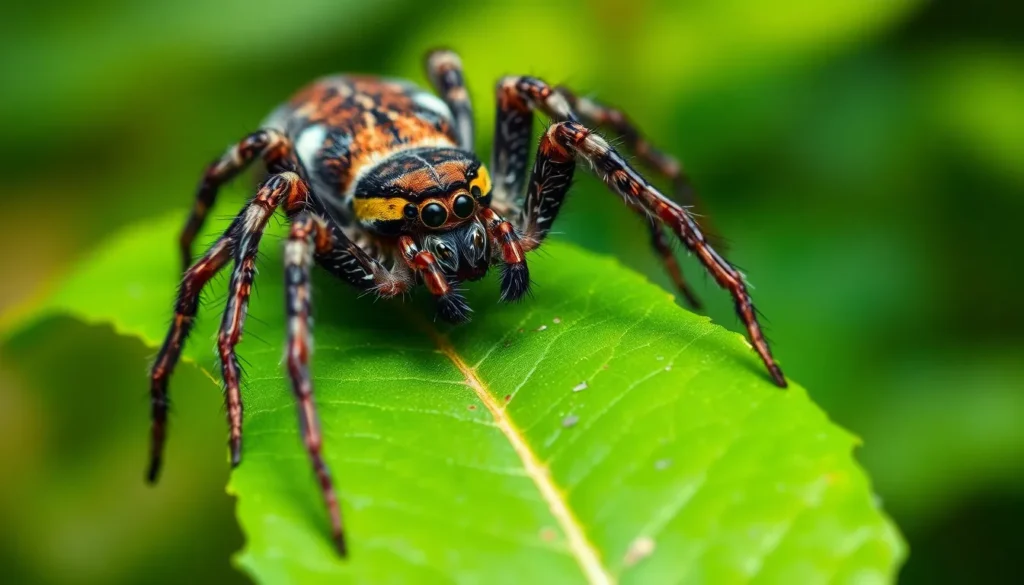Table of Contents
ToggleWolf spiders are fascinating creatures that often spark curiosity among nature enthusiasts. Unlike many of their arachnid relatives, these agile hunters don’t rely on webs to catch their prey. Instead, they employ their impressive speed and keen eyesight to stalk and ambush insects, making them unique in the spider world.
Understanding the behavior and hunting techniques of wolf spiders sheds light on their role in the ecosystem. Their absence of webs raises questions about their evolutionary adaptations and survival strategies. This article explores whether wolf spiders make webs and delves into their intriguing lifestyle, revealing what sets them apart from other spiders.
Overview of Wolf Spiders
Wolf spiders belong to the Lycosidae family and are known for their robust bodies and keen hunting abilities. These spiders are primarily ground-dwellers, exhibiting a wide range of sizes, typically from 0.4 to 2 inches in body length. Their coloration varies, often matching their natural habitats which include forests, grasslands, and gardens.
Wolf spiders possess excellent vision, equipped with eight eyes arranged in three rows. This exceptional eyesight aids them in hunting during both day and night. Instead of producing webs, these spiders employ a stalking technique, relying on their speed and agility to capture prey. They detect movement using their sensory hairs, enabling them to pounce on unsuspecting insects.
Wolf spiders exhibit diverse behaviors during hunting. They actively chase and ambush their prey, rarely relying on traps or silk structures. Their method of hunting contributes to effective hunting grounds where they dominate local insect populations. Furthermore, their evolution reflects adaptations such as camouflage and swift locomotion, enhancing their survival in various environments.
Wolf spiders also play a significant role in the ecosystem, providing natural pest control. Their presence helps regulate insect populations, contributing to a balanced environment. Understanding their hunting strategies and ecological importance highlights their uniqueness among spiders.
Do Wolf Spiders Make Webs?

Wolf spiders don’t make webs for hunting; they employ different strategies. Their unique approach emphasizes speed and agility to capture prey effectively.
The Nature of Their Hunting Techniques
Wolf spiders utilize a hunting technique that sets them apart from web-building spiders. They actively stalk their prey, using their acute eyesight to detect movement from a distance. Once they identify a target, they silently approach, relying on their strong legs for swift movements. Upon close proximity, they pounce on their prey, grasping it with powerful fangs to deliver venom. This method allows them to hunt both day and night, further enhancing their predatory success.
Web Construction Comparison
In contrast to many spiders that create webs, wolf spiders do not construct silk structures to hunt or capture prey. Web-building spiders, like orb-weavers, rely on silk to ensnare insects that wander into their traps. Instead, wolf spiders demonstrate a versatile hunting strategy focused on direct pursuit. Their evolutionary adaptations, such as excellent vision and rapid locomotion, enable them to thrive without the need for web construction.
Characteristics of Wolf Spiders
Wolf spiders possess distinctive features that make them exceptional hunters, enhancing their adaptation to various environments.
Physical Attributes
Wolf spiders typically measure between 0.4 and 2 inches in body length. They exhibit robust bodies, covered in dense hair, which aids in camouflage. Their coloration ranges from brown to gray, often resembling the colors of their surroundings, including leaf litter and soil. They possess eight eyes arranged in three rows, providing them with acute vision, crucial for spotting prey. Wolf spiders also have long legs, enabling swift movement, which complements their hunting style.
Behavior and Habitat
Wolf spiders are primarily ground-dwelling, thriving in diverse habitats such as forests, grasslands, and gardens. They prefer locations with ample cover for stalking and ambushing prey. Active mainly during the night, they rely on agility and quick reflexes for hunting. Utilizing acute eyesight, they can detect movement from significant distances. Their behavior includes actively stalking and pouncing on prey, which strengthens their role as natural pest controllers in ecosystems. Wolf spiders often exhibit solitary behavior, rarely forming webs or social groups, further distinguishing their hunting methods from other spiders.
Benefits of Not Making Webs
Wolf spiders gain several advantages by not constructing webs.
- Energy Efficiency: Hunting without webs reduces energy expenditure; wolf spiders rely on their speed and stealth for capturing prey.
- Increased Mobility: Being agile allows wolf spiders to navigate various terrains efficiently. They can quickly shift between hunting grounds without the constraints of web structures.
- Ambush Tactics: Wolf spiders use their keen eyesight to locate and stalk prey. This direct approach increases the likelihood of a successful hunt.
- Reduced Risk of Predation: Without webs, these spiders minimize their visibility to potential predators. Their camouflage and swift movements enable them to evade dangers effectively.
- Adaptation to Habitats: Wolf spiders thrive in diverse environments such as forests and grasslands. Their hunting strategy aligns well with these habitats, allowing them to blend in seamlessly.
- Enhanced Predator-Prey Interactions: Without the limitations of webs, wolf spiders can respond more dynamically to prey movements, making them formidable hunters.
These benefits contribute to their success within ecosystems, maintaining their role in natural pest control and ecological balance.
Wolf spiders stand out in the arachnid world due to their unique hunting techniques. By relying on speed and keen eyesight instead of web construction, they effectively ambush their prey. This adaptability not only enhances their hunting success but also plays a vital role in maintaining ecological balance. Their robust bodies and agile movements allow them to thrive in various habitats while providing natural pest control. Understanding these fascinating creatures sheds light on the diverse strategies employed by spiders in nature.







